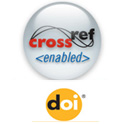



Editorial - (2023) Volume 16, Issue 104
Received: Sep 04, 2023, Manuscript No. jisr-23-115587; Editor assigned: Sep 06, 2023, Pre QC No. jisr-23-115587; Reviewed: Sep 19, 2023, QC No. jisr-23-115587; Revised: Sep 25, 2023, Manuscript No. jisr-23-115587; Published: Sep 30, 2023
Adolescent suicide is a growing public health concern, prompting healthcare providers to adopt universal suicide risk screening in emergency care settings. This article explores the economic implications of implementing suicide risk screening programs for adolescents in emergency care. Universal screening, involving systematic assessment of every adolescent patient for suicide risk, has the potential to provide early identification and intervention. While such programs incur costs associated with staff training, protocol development, and follow-up care, they offer substantial economic benefits. Preventing suicide attempts and completed suicides through early intervention can lead to healthcare cost savings, improved long-term productivity, and reductions in litigation costs. This article underscores the importance of considering the economic dimensions of suicide risk screening in adolescent emergency care, highlighting its potential as both a life-saving intervention and an economically sound investment.
suicide; screening; adolescent; cost analysis; emergency department; universal screening
Adolescence is a critical period of development marked by numerous challenges and transitions. For some young individuals, this stage can be fraught with emotional turmoil, leading to an increased risk of suicidal thoughts and behaviors. Recognizing this vulnerability, healthcare providers have turned their attention to the implementation of suicide risk screening in adolescent emergency care settings. While the primary goal is to identify and provide necessary interventions for at-risk individuals, it is equally important to consider the economic implications of such screening programs. In this article, we delve into the economic dimensions of suicide risk screening in adolescent emergency care.
The Growing Concern of Adolescent Suicide
Adolescent suicide is a concerning and complex issue that demands immediate attention. According to the Centers for Disease Control and Prevention (CDC), suicide is the second leading cause of death among individuals aged 10 to 34 in the United States. This staggering statistic highlights the urgency of implementing effective preventive measures.
Universal Suicide Risk Screening in Adolescent Emergency Care
In recent years, there has been a shift in healthcare policy and practice towards universal suicide risk screening in emergency care settings, especially for adolescents. Universal screening entails systematically assessing every adolescent patient for suicide risk, rather than relying on clinical judgment alone. Several standardized tools and protocols have been developed to aid in this process, such as the Columbia-Suicide Severity Rating Scale (C-SSRS) and the Ask Suicide-Screening Questions (ASQ).
The Benefits of Suicide Risk Screening
Early Identification: One of the primary advantages of universal suicide risk screening is early identification. By systematically screening all adolescents, healthcare providers can identify individuals at risk of suicide who might otherwise go unnoticed.
Prompt Interventions: Early identification allows for the timely initiation of interventions, including psychiatric evaluation, counseling, and appropriate treatment. This can significantly reduce the risk of suicide attempts and completed suicides.
Improved Outcomes: Studies have shown that suicide risk screening in emergency care settings can lead to improved outcomes, including reduced hospitalization rates and better long-term mental health outcomes for adolescents.
The Economic Considerations
While the benefits of suicide risk screening are clear, it is essential to assess the economic implications of implementing such programs. The costs associated with universal screening include training staff, developing and maintaining screening protocols, and providing follow-up care and treatment. However, it is crucial to consider these costs in the context of the potential savings and societal benefits.
Healthcare Cost Savings: Preventing suicide attempts and completed suicides through early intervention can lead to significant healthcare cost savings. Hospitalization and treatment for suicide attempts can be expensive, and preventing even a single suicide can offset the costs of screening programs.
Improved Productivity: Adolescents who receive timely mental health interventions are more likely to lead productive lives, contributing to the workforce and society. This can have long-term economic benefits by reducing the burden on social welfare programs.
Reduction in Litigation Costs: In cases where suicide attempts result in legal action against healthcare providers, the costs of legal fees and potential settlements can be substantial. Effective screening programs can help reduce the likelihood of such legal disputes.
The economic implications of suicide risk screening in adolescent emergency care are multifaceted. While implementing and maintaining screening programs may incur upfront costs, the long-term benefits in terms of healthcare cost savings, improved productivity, and reduced litigation risks are significant. Moreover, the primary aim of these programs is to save lives and prevent the profound human suffering caused by adolescent suicide. In the pursuit of both economic efficiency and the well-being of our youth, suicide risk screening in adolescent emergency care emerges as a critical and justifiable investment.
Indexed at, Google Scholar, Crossref
Indexed at, Google Scholar, Crossref
Indexed at, Google Scholar, Crossref
Indexed at, Google Scholar, Crossref
Indexed at, Google Scholar, Crossref

The Journal of International Social Research received 8982 citations as per Google Scholar report